Related Research Articles
Jean-Bernard Gauthier de Murnan was a French officer for the Continental Army and a French general during the French Revolution.
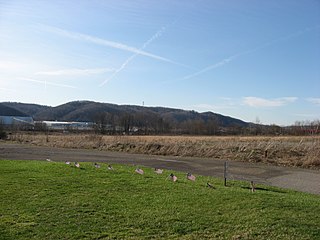
Legionville was the first formal basic training facility for the military of the United States. The camp, which was established in winter 1792 under the command of Major General Anthony Wayne, was near present-day Baden, Pennsylvania, a suburb of Pittsburgh. It was used to train the soldiers which would become the Legion of the United States.

The Legion of the United States was a reorganization and extension of the United States Army from 1792 to 1796 under the command of Major General Anthony Wayne. It represented a political shift in the new United States, which had recently adopted the United States Constitution. The new Congressional and Executive branches authorized a standing army composed of professional soldiers rather than relying on state militias.
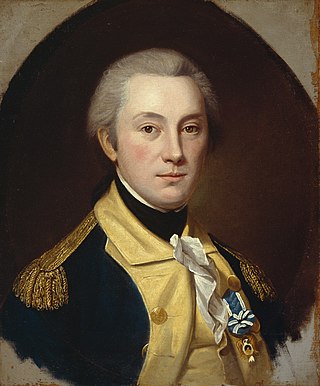
William North was an American soldier and politician.

The Regular Army of the United States succeeded the Continental Army as the country's permanent, professional land-based military force. In modern times the professional core of the United States Army continues to be called the Regular Army. From the time of the American Revolution until after the Spanish–American War, state militias and volunteer regiments organized by the states supported the smaller Regular Army of the United States. These volunteer regiments came to be called United States Volunteers (USV) in contrast to the Regular United States Army (USA). During the American Civil War, about 97 percent of the Union Army was United States Volunteers.
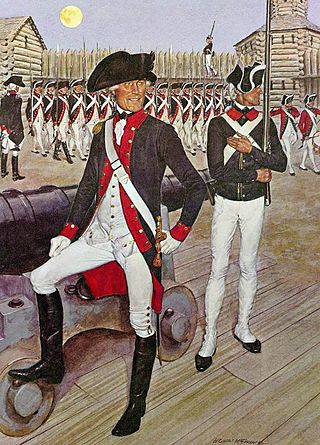
The First American Regiment was the first peacetime regular army infantry unit authorized by the Continental Congress after the American Revolutionary War. Organized in August 1784, it served primarily on the early American frontier west of the Appalachian Mountains. In 1815, following the end of the War of 1812, it was consolidated with several other regiments to form the 3rd Infantry Regiment.
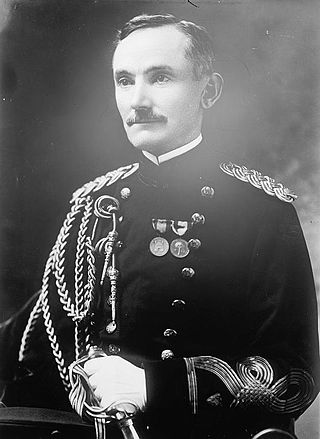
Major General Henry Pinckney McCain was an officer in the United States Army who served as Adjutant General of the Army from 1914 to 1918.
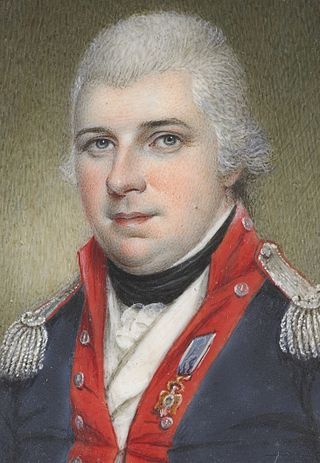
Thomas Humphrey Cushing was an officer in the Continental Army, and later the United States Army. A veteran of the American Revolutionary War and the War of 1812, he attained the rank of brigadier general. He later served as collector of customs for the Port of New London, Connecticut.
Michael Rudolph (1758–1795), an officer in the United States Army, served as acting Adjutant General and acting Inspector General of the U.S. Army in 1793.

Edward Butler was an officer in the United States Army who served as acting Adjutant General and acting Inspector General of the U.S. Army from 1793 to 1794 and from 1796 to 1797.
Jonathan Haskell was an officer in the United States Army who served as acting Adjutant General and acting Inspector General of the U.S. Army in 1796. After the war he returned to farm in Belpre, Ohio.
John Mills was an officer in the United States Army who served as acting Adjutant General and acting Inspector General of the U.S. Army from 1794 to 1796.
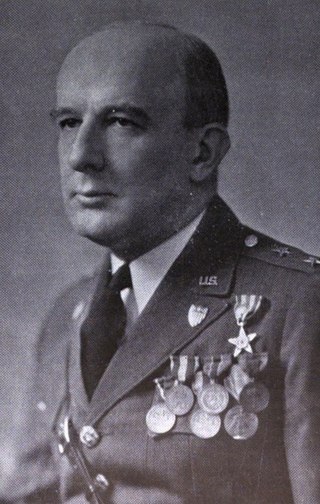
James Fuller McKinley was a career officer in the United States Army. He attained the rank of major general and served as Adjutant General of the United States Army from 1933 to 1935.
The Adjutant General of Maryland is the head military official of the Maryland National Guard, the Maryland Defense Force, and any other military or paramilitary units that may be maintained by the State of Maryland. The adjutant general is responsible for the military department's budget and maintains all State-owned armories in Maryland.
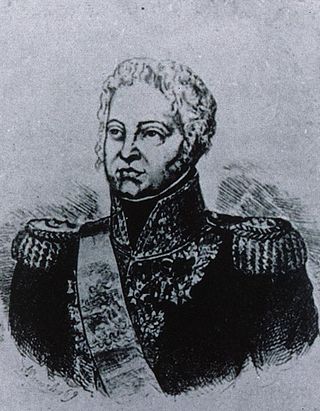
Balthazar Alexis Henri Schauenburg, was a French general who served in the wars of the French Revolution and the Empire. He briefly commanded the Army of the Moselle in 1793 during the War of the First Coalition. A nobleman, he joined the French Royal Army as a sous-lieutenant in 1764. The French Revolution led to rapid promotion and then to arrest for the crime of being an aristocrat. Later restored to command, he commanded Kehl in 1796 and invaded Switzerland in 1798. He served in Jean Victor Marie Moreau's army in 1800 and held commands in the interior under the First French Empire. He retired from the army in 1814 and died in 1831. Schawembourg is one of the names inscribed under the Arc de Triomphe, on Column 23.

Christophe Antoine Merlin became a French division commander during the Napoleonic Wars. He joined a volunteer regiment in 1791 and fought against the Kingdom of Spain in the War of the Pyrenees. After becoming an officer in the 4th Hussar Regiment, he participated in the Rhine and Italian campaigns. In 1805 he was promoted general of brigade and fought in Italy and in the 1806 Invasion of Naples. Later he became an equerry to Joseph Bonaparte when that individual headed the Kingdom of Naples.

The Office of the Inspector General of the United States Army (OTIG) is the agency tasked with investigating the United States Army. Its stated mission is to "provide impartial, objective and unbiased advice and oversight to the army through relevant, timely and thorough inspection, assistance, investigations, and training". The position of Inspector General (IG) has existed since 1777, when Thomas Conway was appointed, and the office has been reorganized many times, varied in size dramatically, and abolished on several occasions before being reinstated. In its early days, the inspectorate was frequently merged with, or proposed to be part of, the Adjutant General's department.

The Office of the Inspector General(OTIG) serves to "provide impartial, objective and unbiased advice and oversight to the Army through relevant, timely and thorough inspection, assistance, investigations, and training." The position has existed since 1777, when Thomas Conway was appointed the first inspector. The department was reorganized many times, and almost abolished on several occasions. In its early days, the department was frequently merged with, or proposed to be part of the Adjutant General. It expanded greatly after the American Civil War, to the point that it had around 2,000 officers in 1993. The current holder of the position is Donna W. Martin.

John Fisher Preston Jr. was an American army officer who rose to the rank of Inspector General of the United States Army. His first conflict was the Spanish–American War serving in the 7th Infantry, and fighting in the Battle of San Juan Hill and Siege of Santiago. For his service in the war, Preston received the Silver Star. He then spent around a decade serving at various forts in the Philippines and across the United States. Preston was involved in the Quartermaster Corps and the Pay Department until the outbreak of World War I, serving a couple of years in France. He attended various Army schools until 1923, and had various leadership positions in the Army over the next fifteen years, culminating in appointment as Inspector General in 1931. After a four-year tenure and brief stationing at Fort Sam Houston, he retired from the army in 1936 and entered the banking industry in San Antonio. He died on July 1, 1960.

James M. J. Sanno was a career officer in the United States Army. A veteran of the American Civil War, American Indian Wars, Spanish–American War, Philippine–American War, he attained the rank of brigadier general, and was best known for his command of the: 4th Infantry Regiment; 2nd Brigade, 1st Division, Eighth Army Corps; 18th Infantry Regiment; 27th Infantry Regiment; and Department of Colorado. On July 30, 1903, Sanno was promoted to brigadier general in recognition of his long career of superior service, and he retired on July 31. Sanno died at Fort Oglethorpe, Georgia, on May 4, 1907. He was buried at Arlington National Cemetery.
References
- Clary, David A.; Whitethorne, Joseph W. A. (1987). The Inspectors General of the United States Army, 1777-1903. Washington, D.C.: U. S. Army Center of Military History. p. 421.
- Heitman, Francis B. (1903). Historical Register and Dictionary of the United States Army, Volume 1. Washington, D.C.: Government Printing Office. pp. 37–38, 363–364.
- Powell, William H. (1871). A history of the organization and movements of the 4th regiment of Infantry: U.S.A., 1796-1870. Washington, D.C.: M'Gill & Withrow. p. 112.
- Rodenbough, Theophilus F.; Haskin, William L. (1896). The Army of the United States. New York City: Maynard, Merrill & Co. pp. 5 & 23. Archived from the original on 2009-04-26. Retrieved 2009-06-05.